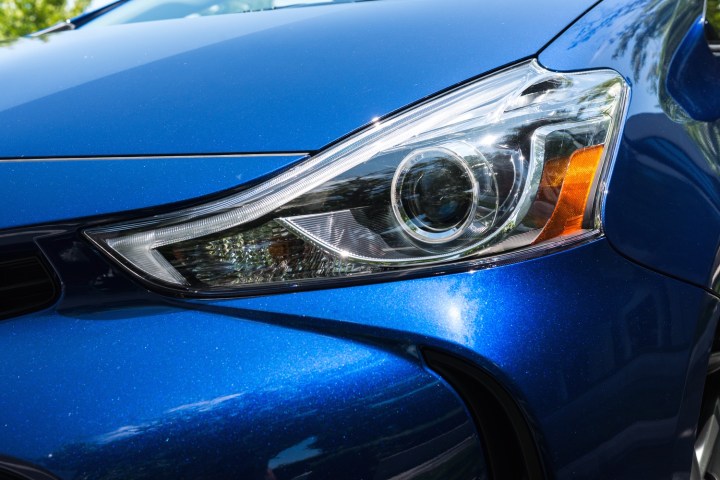
The safety organization recently conducted its first-ever headlight test. The results were illuminating, but not in a good way, as most of the systems tested were found to be unsatisfactory. The IIHS tested 82 headlight systems across 31 2016 models from both mainstream and luxury brands. But just one car received the top “good” rating.
That was the 2016 Toyota Prius V, but only when equipped with optional LED lights, and a high-beam assist system that automatically shuts off brights when another car approaches. Those features are only available in an option package on the highest trim level, and without them the Prius V got the lowest rating, “poor.”
The difference has to do with reaction times. With LED headlights, testers said a Prius V driver could be traveling 70 mph and still be able to spot an obstacle and brake in time to avoid a crash. The car would have to be traveling 20 mph slower to do that with the base halogen system. And in the worst performer, the BMW 3 Series with base halogen lights, avoiding a crash is only possible at 35 mph or slower, the IIHS says.
This doesn’t mean a car needs a high-tech lighting system to do well in these tests. The Honda Accord sedan actually scored higher with the more basic available system, getting an “acceptable” with halogen lights, but only a “marginal” with LEDs and high-beam assist. Cadillac ATS, Kia Optima, and Mercedes-Benz C-Class test cars all had the ability to swivel their headlights in corners, but that didn’t help their scores at all.
All cars were tested by the IIHS on its own track (after dark, of course) on both straightaways and curves, with both high beams and low beams. Glare from low beams was also measured, and the results were compared to a theoretical ideal lighting system. Low-beam results were weighed more heavily because they’re used more, and so were scores for straight sections of road, because that’s where the majority of crashes take place.
Editors' Recommendations
- Model 3 is the first Tesla electric car to win an IIHS safety award
- Hyundai Nexo is the first fuel-cell vehicle crash-tested by the IIHS


